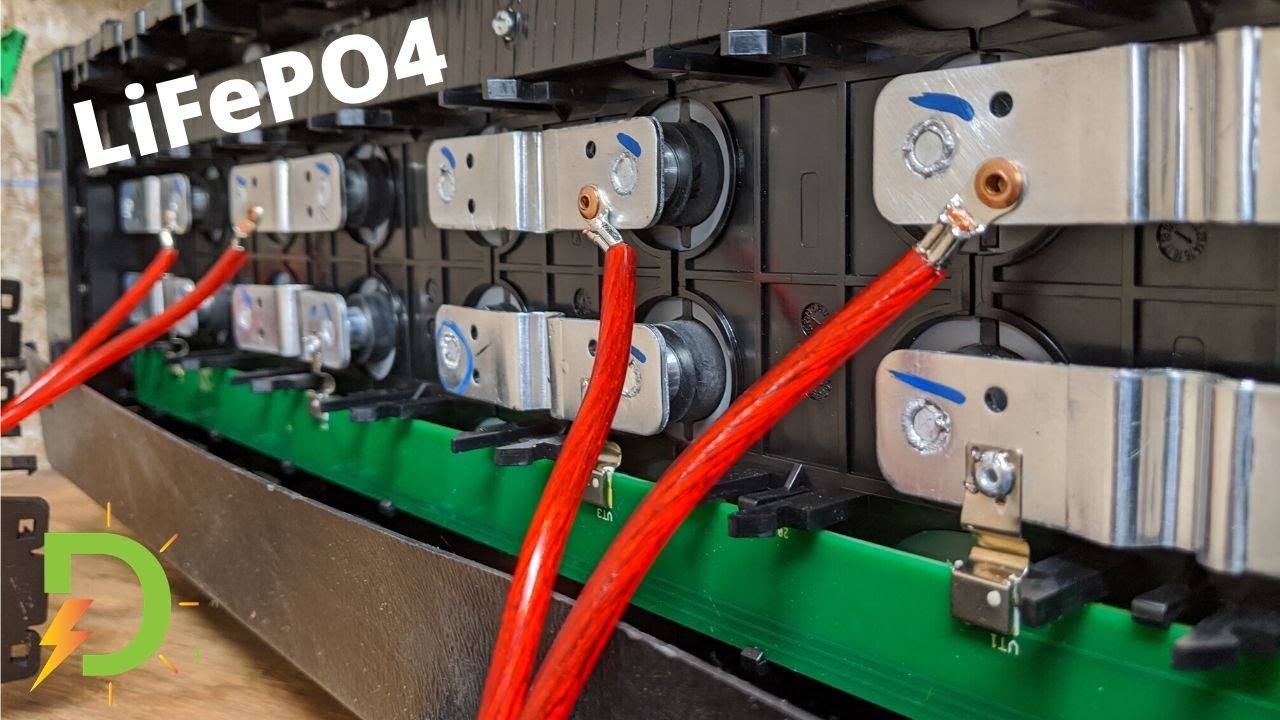Can LiFePO4 batteries be connected in parallel?
The use of LiFePO4 batteries for power storage has become increasingly popular in the last few years due to their high energy density, low cost, and long lifespan. Connecting multiple LiFePO4 batteries in parallel can be a great way to increase the total storage capacity of your system. But before you do so, it is essential to understand how exactly to connect these batteries safely and effectively.

Can LiFePO4 batteries be connected in parallel?
Yes, LiFePO4 batteries can be connected in parallel. This is an ideal connection for those who need additional storage capacity or higher voltage from the same battery pack. It is also a great way to extend the life of your battery by adding more cells and balancing their charge with each use.
Parallel connections involve connecting multiple cells of like-voltage to increase the amperage output and total energy capacity. When making such a connection, the key is ensuring that all cells have similar discharge rates. Otherwise, unequal current will flow between them, causing issues such as overcharging or undercharging specific cells leading to reduced service life and possible fire risk.
How can LiFePO4 batteries be connected in parallel?
LiFePO4 batteries, or Lithium Iron Phosphate, can be connected in parallel to increase the capacity of a single battery. This connection is beneficial if you need higher current and voltage output and longer run times. Connecting these batteries in parallel is a simple process that involves combining the positive terminal of one battery with the positive terminal of another and likewise with the negative terminals. This connection can be made using connectors or direct soldering on each cell’s tabs.
Advantages and disadvantages of connecting LiFePO4 batteries in parallel
Benefits of Connecting LiFePO4 Batteries in Parallel:
1. Increased Current Output: Connecting LiFePO4 batteries in parallel increases the current output by adding up the total ampere-hour capacity of all the connected batteries. This will result in more power being available for electric vehicles, portable devices, and other applications that require a large amount of current to run efficiently.
2. Increased Voltage Stability: Parallel connections increase voltage stability as each battery works together, reducing fluctuations from individual cells. This ensures stable operation even if one or more batteries are damaged or go wrong due to overcharging, short-circuiting, etc.
3. Lower Cost: Connecting multiple batteries can be much cheaper than buying an expensive high-capacity single battery unit as the cost will be distributed across all of them instead of just one team.
Disadvantages of Connecting LiFePO4 Batteries in Parallel:
1. Higher Risk Of Overcharging: When connecting multiple batteries in parallel, there is an increased risk that they could be overcharged if not monitored closely, as too much current flowing through one cell may cause it to reach dangerously high levels, which lead to degradation or damage.
2. More Complicated Wiring: Complex wiring is required when connecting multiple batteries increases the time it takes to set up and maintain them correctly, resulting in higher labor costs than a single battery system with fewer wires.
3. Balance Issues Between Cells: As each cell within a battery pack has its charging characteristics, parallel connection causes unequal charge distribution between all cells if not appropriately balanced, leading to reduced performance and potential safety risks due to overheating and fire hazards caused by uneven charging levels within cells.
Connecting LiFePO4 batteries in parallel has advantages, including increased capacity and faster charge times. Still, it comes with potential risks, such as imbalanced charging due to a lack of monitoring circuits or active balance systems, which will lead to reduced performance and potential safety risks due to overheating or fire hazards caused by uneven charging levels within cells.
Safety considerations when connecting LiFePO4 batteries in parallel
Importance of matching the batteries in terms of capacity, voltage, and age
Connecting LiFePO4 (Lithium Iron Phosphate) batteries in parallel is a common way to increase capacity and provide extra power for electrical systems. However, due to the chemical properties of these powerful batteries, it’s essential to be aware of specific safety considerations when connecting them in parallel. The most crucial consideration is matching the batteries in capacity, voltage, and age.
Matching Capacity
When connecting LiFePO4 batteries in parallel, it’s essential to ensure that all batteries have roughly the same energy storage capacity to operate safely and efficiently. Suppose one battery has a significantly greater degree than the other. In that case, it will end up doing most of the work while the others will remain idle, leading to unbalanced charge distribution. This could lead to a dangerous situation where one battery ends up discharging too quickly or becomes over-charged due to an imbalance in current flow between them.
Matching Voltage
The voltages on each battery should also be equal so that they don’t draw more current from any one battery than another. Suppose a significant difference exists between two connected LiFepo4 cells’ voltage levels. In that case, this can cause an uneven charging or discharging cycle, which can put undue strain on the system and potentially cause damage or even fire-hazard conditions. Additionally, suppose two different LiFePo4 cells with varying voltage levels are connected. In that case, this can create an overcurrent situation and put additional stress on the components throughout your system.
Matching Age
Finally, you should also ensure that all of your LiFepO4 cells are roughly the same age before connecting them in parallel. Batteries degrade over time due to usage cycles, so if two cells have been used extensively compared to other newer ones already part of your system setup, then they may not be able to keep up with demands placed upon them by their counterparts – leading again to potential danger situations caused by imbalances or even short-circuiting scenarios occurring due to incompatible cell chemistry.
Potential hazards and how to avoid them
When connecting LiFePO4 batteries in parallel, several safety considerations should be considered. LiFePO4 (Lithium Iron Phosphate) batteries are commonly used in electric vehicles, power tools, and battery storage systems due to their high energy density, low cost, and long life. However, if these batteries are misconnected or without the appropriate safety measures, they can pose a significant risk of fire and explosion.
Potential hazards include sparks from reverse polarity connections and internal cell heating caused by mismatched cells with different voltages. In addition, when LiFePO4 batteries are connected in parallel, there is an increased risk of overcharging or short-circuiting due to the higher currents that flow through the system.
To ensure the safe operation of your LiFePO4 battery system, it is essential to take certain precautions:
1. Ensure that all batteries have similar capacities and voltages before connecting them in parallel. This will reduce the risks associated with mismatched cells, including current imbalances and heat buildup.
2. Make sure that all cables used for connection are appropriately rated for the type of application being undertaken so that they do not become overloaded or cause sparks due to excessive voltage drop.
3. Use high-quality connectors that offer good conductivity and prevent accidental disconnects. This will help avoid sudden drops in voltage which can damage the battery pack or cause undesired outcomes such as sparking and fire/explosion hazards.
4. Always double-check current ratings before connecting multiple battery packs since this may cause a rise in voltage above recommended levels leading to potential overloads and damage to other components of your system if left unchecked.
5. Finally, always ensure you install an appropriate fuse at each junction point between LiFePO4 batteries connected in parallel to protect against short circuits or other unintended electrical issues that could lead to severe injury or death if left unchecked.
By following these simple guidelines, it is possible to minimize any potential risks associated with running LiFePO4 batteries in parallel while still enjoying their benefits, such as improved capacity, cost savings, and longer life span compared with traditional lead acid battery solutions.
In conclusion
It is possible to connect LiFePO4 batteries in parallel. It is an efficient way to increase energy storage capacity and provide a backup in the event of an individual battery failure. But it is important to note that since LiFePO4 batteries are not identical, a balancing circuit must be installed to work correctly. Furthermore, when connecting the batteries, precautions should be taken to prevent any short circuits or other safety hazards.








